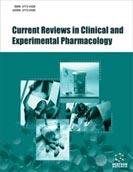Abstract
PI3K/AKT/mTOR (phosphoinositide 3-kinase/protein kinase B/mammalian target of rapamycin) signaling pathway is an important signal transduction pathway mediated by enzyme-linked receptors with many biological functions in mammals. This pathway modulates the epigenetic modification of DNA and target gene histones and plays a significant role in regulating biological activity, disease progression, oncogenesis, and cancer progression. PI3K/AKT/mTOR signaling pathway involves and mediates many cellular processes such as nutrient uptake, proliferation, anabolic reactions, and cell survival. Several studies have shown that PI3K/AKT/mTOR has been a promising therapeutic approach to intracerebral hemorrhage (ICH). ICH is characterized by the progressive development of hematoma, which leads to the structural destabilization of the neurons and glial cells, leading to neuronal deformation, further contributing to mitochondrial dysfunction, membrane depolarization, oligaemia, and neurotransmitter imbalance. Partial suppression of cell metabolism and necrosis can occur, depending on the degree of mitochondrial dysfunction. Therefore in the following review, we discuss whether or not the activation of the PI3K/AKT/mTOR signaling pathway could minimize neuronal dysfunction following ICH. We further elaborate the review by discussing the updated pathophysiology of brain hemorrhage and the role of molecular targets in other neurodegenerative diseases. This review provides current approachable disease treatment in various disease states, single and dual PI3K/AKT/mTOR signaling pathway modulators.
Keywords: PI3K/AKT/mTOR signaling, intracerebral hemorrhage, neurodegeneration, neuronal metabolism, neuroprotection, drug targets.
Graphical Abstract
[http://dx.doi.org/10.1016/j.emc.2012.06.003] [PMID: 22974648]
[http://dx.doi.org/10.1177/1849543520970819]
[http://dx.doi.org/10.5853/jos.2016.00864] [PMID: 28178408]
[http://dx.doi.org/10.1016/S0006-8993(00)02427-6] [PMID: 10882783]
[http://dx.doi.org/10.3171/jns.2000.92.6.1016] [PMID: 10839264]
[http://dx.doi.org/10.1097/01.WCB.0000073905.87928.6D] [PMID: 12796711]
[http://dx.doi.org/10.1002/ana.10750] [PMID: 14595655]
[http://dx.doi.org/10.1385/NCC:1:1:5] [PMID: 16174894]
[http://dx.doi.org/10.1124/mol.105.018671] [PMID: 16434614]
[http://dx.doi.org/10.1242/dmm.045021] [PMID: 32540990]
[http://dx.doi.org/10.1038/s41598-017-12160-6] [PMID: 28928429]
[http://dx.doi.org/10.1016/j.brainres.2006.06.011] [PMID: 16828716]
[PMID: 12699545]
[http://dx.doi.org/10.1097/01.CCM.0000063047.63862.99] [PMID: 12771622]
[http://dx.doi.org/10.1089/089771504772695959] [PMID: 14987466]
[http://dx.doi.org/10.1093/jnen/59.8.641] [PMID: 10952055]
[http://dx.doi.org/10.1161/01.STR.0000153044.60858.1b] [PMID: 15637325]
[http://dx.doi.org/10.1016/S1474-4422(05)70283-0] [PMID: 16361023]
[http://dx.doi.org/10.1007/3-211-30714-1_42] [PMID: 16671453]
[http://dx.doi.org/10.1159/000065703] [PMID: 12401953]
[http://dx.doi.org/10.1155/2013/746068] [PMID: 24223607]
[http://dx.doi.org/10.1161/01.STR.0000126827.69286.90] [PMID: 15087562]
[http://dx.doi.org/10.1179/016164105X25225] [PMID: 15845210]
[http://dx.doi.org/10.1227/01.NEU.0000197333.55473.AD] [PMID: 16528196]
[PMID: 11322448]
[http://dx.doi.org/10.1097/00004647-200108000-00004] [PMID: 11487727]
[http://dx.doi.org/10.1038/sj.jcbfm.9600305] [PMID: 16552422]
[http://dx.doi.org/10.1161/01.STR.32.4.883] [PMID: 11283387]
[http://dx.doi.org/10.1161/01.STR.0000258078.35316.30] [PMID: 17290026]
[http://dx.doi.org/10.1212/01.wnl.0000208408.98482.99] [PMID: 16636233]
[http://dx.doi.org/10.1097/01.CCM.0000220763.85974.E8] [PMID: 16641615]
[http://dx.doi.org/10.1161/01.STR.28.12.2370] [PMID: 9412616]
[http://dx.doi.org/10.1161/01.STR.0000035284.12699.84] [PMID: 12411653]
[http://dx.doi.org/10.1007/978-3-7091-0651-8_91] [PMID: 14753483]
[http://dx.doi.org/10.1161/01.STR.0000131807.54742.1a] [PMID: 15178826]
[http://dx.doi.org/10.1161/01.STR.0000035283.34109.EA] [PMID: 12411654]
[http://dx.doi.org/10.1016/S1042-3680(02)00012-8] [PMID: 12486925]
[http://dx.doi.org/10.3171/jns.2002.96.4.0736] [PMID: 11990815]
[http://dx.doi.org/10.1161/01.STR.0000240674.99945.4e] [PMID: 16960094]
[http://dx.doi.org/10.1161/01.STR.31.3.726] [PMID: 10700511]
[http://dx.doi.org/10.1097/00004647-200107000-00005] [PMID: 11435792]
[http://dx.doi.org/10.1161/01.STR.0000076010.10696.55] [PMID: 12805502]
[http://dx.doi.org/10.1016/j.expneurol.2005.01.017] [PMID: 15869939]
[http://dx.doi.org/10.1212/WNL.52.2.266] [PMID: 9932942]
[http://dx.doi.org/10.3389/fncel.2019.00528] [PMID: 31827423]
[http://dx.doi.org/10.1002/jnr.22453] [PMID: 20653046]
[http://dx.doi.org/10.1126/science.275.5300.661] [PMID: 9005851]
[http://dx.doi.org/10.1016/S0092-8674(00)80405-5] [PMID: 9346240]
[http://dx.doi.org/10.1016/S0092-8674(00)80595-4] [PMID: 10102273]
[http://dx.doi.org/10.1038/sj.cr.7290253] [PMID: 15625017]
[http://dx.doi.org/10.1016/j.surg.2009.03.022] [PMID: 19715808]
[http://dx.doi.org/10.1677/JOE-07-0097] [PMID: 17641274]
[http://dx.doi.org/10.1242/jcs.093773] [PMID: 24587488]
[http://dx.doi.org/10.1042/BJ20120008] [PMID: 22507127]
[http://dx.doi.org/10.1371/journal.pone.0076405] [PMID: 24098492]
[http://dx.doi.org/10.1002/neu.1014] [PMID: 11257612]
[http://dx.doi.org/10.1523/JNEUROSCI.2270-05.2005] [PMID: 16339025]
[http://dx.doi.org/10.1100/tsw.2010.64] [PMID: 20419274]
[http://dx.doi.org/10.1523/JNEUROSCI.4477-10.2011] [PMID: 21414895]
[http://dx.doi.org/10.1111/j.1460-9568.2006.04859.x] [PMID: 16820027]
[http://dx.doi.org/10.1038/ng.2331] [PMID: 22729224]
[http://dx.doi.org/10.1016/j.jneuroim.2015.04.003] [PMID: 25903737]
[http://dx.doi.org/10.1016/j.neuropharm.2018.08.002] [PMID: 30081001]
[http://dx.doi.org/10.1016/j.cellsig.2014.08.019] [PMID: 25173700]
[http://dx.doi.org/10.1007/s12672-016-0251-8] [PMID: 26858237]
[http://dx.doi.org/10.1152/ajpcell.00375.2009] [PMID: 20018949]
[http://dx.doi.org/10.1016/S0955-0674(98)80149-X] [PMID: 9561851]
[http://dx.doi.org/10.1042/BST0370217] [PMID: 19143635]
[http://dx.doi.org/10.2337/diabetes.52.2.227] [PMID: 12540590]
[http://dx.doi.org/10.1038/nm1202-798] [PMID: 12426561]
[http://dx.doi.org/10.1016/j.brainres.2013.09.025] [PMID: 24076449]
[http://dx.doi.org/10.1016/j.brainres.2006.06.109] [PMID: 16925984]
[http://dx.doi.org/10.1038/cdd.2016.36] [PMID: 27058317]
[http://dx.doi.org/10.1016/j.bbr.2017.09.033] [PMID: 28943428]
[http://dx.doi.org/10.1111/apha.13167] [PMID: 30053339]
[http://dx.doi.org/10.1038/nn.2937] [PMID: 22019731]
[http://dx.doi.org/10.1186/s13041-014-0078-6] [PMID: 25373491]
[http://dx.doi.org/10.1016/S0896-6273(01)00433-0] [PMID: 11567621]
[http://dx.doi.org/10.1002/ijc.27935] [PMID: 23151917]
[http://dx.doi.org/10.1038/cddis.2014.69] [PMID: 24577082]
[http://dx.doi.org/10.1155/2019/4101738] [PMID: 31281574]
[http://dx.doi.org/10.1016/j.bbamcr.2016.09.003] [PMID: 27599716]
[http://dx.doi.org/10.1016/j.micinf.2015.04.004] [PMID: 25912134]
[http://dx.doi.org/10.1016/j.arr.2014.07.004] [PMID: 25078115]
[http://dx.doi.org/10.1016/j.expneurol.2012.10.007] [PMID: 23063604]
[http://dx.doi.org/10.1007/s00702-010-0438-z] [PMID: 20632195]
[http://dx.doi.org/10.1016/j.exger.2009.10.011] [PMID: 19853649]
[http://dx.doi.org/10.1016/S0278-5846(03)00124-6] [PMID: 12921904]
[http://dx.doi.org/10.4161/cc.21572] [PMID: 22895011]
[http://dx.doi.org/10.1038/ni.2426] [PMID: 23023391]
[http://dx.doi.org/10.1074/jbc.M507201200] [PMID: 16049009]
[http://dx.doi.org/10.1111/j.1742-4658.2010.07965.x] [PMID: 21182587]
[http://dx.doi.org/10.1111/j.1365-2443.2010.01433.x] [PMID: 20670274]
[http://dx.doi.org/10.1038/cddis.2017.299] [PMID: 28661473]
[http://dx.doi.org/10.1016/j.devcel.2014.10.013] [PMID: 25458013]
[http://dx.doi.org/10.1177/0271678X16667953] [PMID: 27604312]
[http://dx.doi.org/10.3892/ijmm.2016.2495] [PMID: 26936125]
[http://dx.doi.org/10.1371/journal.pgen.1004626] [PMID: 25275521]
[http://dx.doi.org/10.1539/joh.16-0089-OA] [PMID: 27885243]
[http://dx.doi.org/10.1038/srep38247] [PMID: 27910893]
[http://dx.doi.org/10.3892/mmr.2013.1628] [PMID: 23942837]
[http://dx.doi.org/10.1186/alzrt208] [PMID: 24074163]
[http://dx.doi.org/10.4161/auto.9099] [PMID: 19556857]
[http://dx.doi.org/10.1016/j.neuroscience.2011.03.021] [PMID: 21463664]
[http://dx.doi.org/10.3892/mmr.2013.1787] [PMID: 24220542]
[http://dx.doi.org/10.2174/156800910791517172] [PMID: 20384580]
[http://dx.doi.org/10.1016/j.ejphar.2010.05.024] [PMID: 20566415]
[http://dx.doi.org/10.1016/j.coph.2011.05.003] [PMID: 21646048]
[http://dx.doi.org/10.1515/chem-2019-0015]
[http://dx.doi.org/10.1016/j.biopha.2017.08.125] [PMID: 28903184]
[http://dx.doi.org/10.1016/j.gendis.2018.06.001] [PMID: 30320189]
[http://dx.doi.org/10.1016/j.redox.2017.04.006] [PMID: 28395173]
[http://dx.doi.org/10.1155/2021/5472605] [PMID: 33777313]
[http://dx.doi.org/10.1016/j.cell.2012.03.017] [PMID: 22500797]
[http://dx.doi.org/10.1128/MCB.19.6.4302] [PMID: 10330171]
[http://dx.doi.org/10.3390/ijms19030880] [PMID: 29547541]
[http://dx.doi.org/10.1016/j.neuint.2021.105067] [PMID: 33992742]
[http://dx.doi.org/10.31557/APJCP.2019.20.11.3377] [PMID: 31759362]
[http://dx.doi.org/10.1002/jcp.27911] [PMID: 30536897]
[http://dx.doi.org/10.1007/s11060-019-03227-7] [PMID: 31392595]
[http://dx.doi.org/10.1097/CAD.0000000000000354] [PMID: 26918392]
[http://dx.doi.org/10.1007/s11060-019-03243-7] [PMID: 31325145]
[http://dx.doi.org/10.1016/j.yjmcc.2020.02.006] [PMID: 32087218]
[http://dx.doi.org/10.1016/j.plantsci.2020.110416] [PMID: 32081264]
[http://dx.doi.org/10.1371/journal.pone.0222730] [PMID: 31536556]
[http://dx.doi.org/10.1111/jgs.12553] [PMID: 24329892]
[http://dx.doi.org/10.1016/S0165-6147(03)00100-7] [PMID: 12767722]
[http://dx.doi.org/10.1016/j.bbadis.2003.09.001] [PMID: 14636947]
[http://dx.doi.org/10.1074/jbc.M305964200] [PMID: 12900409]
[http://dx.doi.org/10.1097/00001756-200302100-00020] [PMID: 12598741]
[http://dx.doi.org/10.1523/JNEUROSCI.5245-07.2008] [PMID: 18322105]
[http://dx.doi.org/10.1186/1750-1326-4-14] [PMID: 19291319]
[http://dx.doi.org/10.1021/jp506258g] [PMID: 25153942]
[http://dx.doi.org/10.1186/alzrt265] [PMID: 25031641]
[http://dx.doi.org/10.3390/biom9080388] [PMID: 31434341]
[http://dx.doi.org/10.1007/s13311-013-0218-1] [PMID: 24085420]
[http://dx.doi.org/10.1523/JNEUROSCI.0625-19.2019] [PMID: 31358653]
[http://dx.doi.org/10.1111/jnc.14066] [PMID: 28488766]
[http://dx.doi.org/10.1007/s12031-013-0208-0] [PMID: 24390959]
[http://dx.doi.org/10.1155/2019/4209475] [PMID: 31191636]
[http://dx.doi.org/10.3389/fnins.2018.00073] [PMID: 29515352]
[http://dx.doi.org/10.1155/2016/9450137] [PMID: 27738547]
[http://dx.doi.org/10.1159/000493228] [PMID: 30184529]
[PMID: 26261796]
[http://dx.doi.org/10.1097/WNR.0000000000000871] [PMID: 28902711]
[http://dx.doi.org/10.1016/j.phymed.2016.12.017] [PMID: 28190476]
[http://dx.doi.org/10.1016/j.freeradbiomed.2014.06.023] [PMID: 24992836]
[http://dx.doi.org/10.5114/aoms.2015.56342] [PMID: 26788077]
[http://dx.doi.org/10.1083/jcb.146.5.955] [PMID: 10477751]
[http://dx.doi.org/10.1159/000375447] [PMID: 25896770]
[http://dx.doi.org/10.1038/nm.3617] [PMID: 25038828]
[http://dx.doi.org/10.1038/cdd.2009.127] [PMID: 19745829]
[http://dx.doi.org/10.1038/cddis.2016.104] [PMID: 27124580]
[http://dx.doi.org/10.3171/jns.1986.65.5.0697] [PMID: 3772459]
[http://dx.doi.org/10.2174/1871527318666190610101144] [PMID: 31187715]
[http://dx.doi.org/10.1016/S0009-9260(99)90825-5] [PMID: 10437691]
[http://dx.doi.org/10.1038/jcbfm.2011.124] [PMID: 21863040]
[http://dx.doi.org/10.3171/jns.1994.81.1.0093] [PMID: 8207532]
[http://dx.doi.org/10.1016/S1052-3057(03)00036-3] [PMID: 17903920]
[http://dx.doi.org/10.1161/01.str.0000167694.58419.a2] [PMID: 15914769]
[http://dx.doi.org/10.1172/JCI118497] [PMID: 8613528]
[http://dx.doi.org/10.1038/nn1302] [PMID: 15311281]
[PMID: 17149688]
[http://dx.doi.org/10.1074/jbc.M312946200] [PMID: 14985348]
[http://dx.doi.org/10.1073/pnas.1001056107] [PMID: 20385796]
[http://dx.doi.org/10.1161/01.STR.29.10.2136] [PMID: 9756595]
[http://dx.doi.org/10.1161/01.STR.21.5.801] [PMID: 2160142]
[http://dx.doi.org/10.1161/01.STR.0000155729.12931.8f] [PMID: 15692122]
[http://dx.doi.org/10.1007/978-3-7091-0693-8_2] [PMID: 21725724]
[http://dx.doi.org/10.3389/fneur.2012.00085] [PMID: 22661966]
[http://dx.doi.org/10.3171/jns.1987.66.4.0568] [PMID: 3559723]
[http://dx.doi.org/10.1016/S0022-510X(99)00288-9] [PMID: 10704978]
[http://dx.doi.org/10.1089/neu.1999.16.143] [PMID: 10098959]
[http://dx.doi.org/10.1155/2017/5135429] [PMID: 28698874]
[http://dx.doi.org/10.1177/2040620717737701] [PMID: 29204261]
[http://dx.doi.org/10.1111/j.1538-7836.2007.02663.x] [PMID: 17723130]
[http://dx.doi.org/10.1177/1753944720924255] [PMID: 32449469]
[http://dx.doi.org/10.1056/NEJMoa042991] [PMID: 15728810]
[http://dx.doi.org/10.1056/NEJMoa0707534] [PMID: 18480205]
[http://dx.doi.org/10.1161/01.STR.32.4.993] [PMID: 11283402]
[http://dx.doi.org/10.1161/STROKEAHA.109.555003] [PMID: 19696423]
[http://dx.doi.org/10.1016/j.neulet.2009.01.039] [PMID: 19383431]
[http://dx.doi.org/10.1038/sj.jcbfm.9600010] [PMID: 15678115]
[http://dx.doi.org/10.1002/ana.20741] [PMID: 16453316]
[http://dx.doi.org/10.1056/NEJM199512143332401]
[PMID: 15502123]
[http://dx.doi.org/10.1111/j.1742-7843.2010.00570.x] [PMID: 20406202]
[http://dx.doi.org/10.1016/j.surneu.2005.07.034] [PMID: 16256835]
[http://dx.doi.org/10.1161/hs1001.096009] [PMID: 11588338]
[PMID: 22592678]
[http://dx.doi.org/10.1007/s12028-011-9533-8] [PMID: 21503807]
[http://dx.doi.org/10.1002/hep.20703] [PMID: 15841455]
[http://dx.doi.org/10.1016/S0006-8993(01)02618-X] [PMID: 11478919]
[http://dx.doi.org/10.1038/sj.bjp.0704449] [PMID: 11786485]
[http://dx.doi.org/10.1016/S0028-3908(00)00170-2] [PMID: 11166336]
[http://dx.doi.org/10.1161/STROKEAHA.106.472746] [PMID: 17569876]
[http://dx.doi.org/10.1161/STROKEAHA.107.503334] [PMID: 18369171]
[http://dx.doi.org/10.1161/STROKEAHA.110.597476] [PMID: 20876519]
[http://dx.doi.org/10.1111/j.1527-3458.2003.tb00252.x] [PMID: 14530797]
[http://dx.doi.org/10.1161/STROKEAHA.107.487090] [PMID: 17761915]
[http://dx.doi.org/10.1111/j.1600-0404.2008.01083.x] [PMID: 18684213]
[http://dx.doi.org/10.1056/NEJMoa061894] [PMID: 16899775]
[http://dx.doi.org/10.1161/01.ATV.0000044458.23905.3B] [PMID: 12588778]
[http://dx.doi.org/10.1016/S0006-8993(02)02649-5] [PMID: 12031849]
[http://dx.doi.org/10.1161/01.STR.32.4.980] [PMID: 11283400]
[http://dx.doi.org/10.3171/jns.2004.101.1.0104] [PMID: 15255259]
[http://dx.doi.org/10.1161/01.STR.0000131270.45822.85] [PMID: 15166393]
[http://dx.doi.org/10.1161/STROKEAHA.108.544395] [PMID: 19644071]
[http://dx.doi.org/10.1089/neu.2007.0288] [PMID: 17610353]
[PMID: 28485793]
[http://dx.doi.org/10.1016/j.lfs.2018.02.039] [PMID: 29499280]
[http://dx.doi.org/10.1038/nm1355] [PMID: 16415877]
[http://dx.doi.org/10.1016/j.brainres.2013.01.037] [PMID: 23370001]
[http://dx.doi.org/10.12659/MSM.915119] [PMID: 30855024]
[http://dx.doi.org/10.3389/fncel.2019.00019] [PMID: 30778288]
[http://dx.doi.org/10.1002/brb3.688] [PMID: 28523230]
[http://dx.doi.org/10.1016/j.neulet.2006.10.050] [PMID: 17123715]
[http://dx.doi.org/10.1097/01.WCB.0000130866.25040.7D] [PMID: 15362723]
[http://dx.doi.org/10.1096/fj.02-0947fje] [PMID: 12824303]
[http://dx.doi.org/10.1016/j.ibror.2020.03.001] [PMID: 32368686]
[http://dx.doi.org/10.1080/14737175.2019.1623671] [PMID: 31188036]
[http://dx.doi.org/10.1016/j.jns.2008.12.020] [PMID: 19168192]
[http://dx.doi.org/10.1186/1742-2094-10-45] [PMID: 23561827]
[http://dx.doi.org/10.3390/ijms19123725] [PMID: 30477115]
[http://dx.doi.org/10.1159/000455983] [PMID: 28214828]
[http://dx.doi.org/10.1186/s13578-020-00416-0] [PMID: 32266056]






























